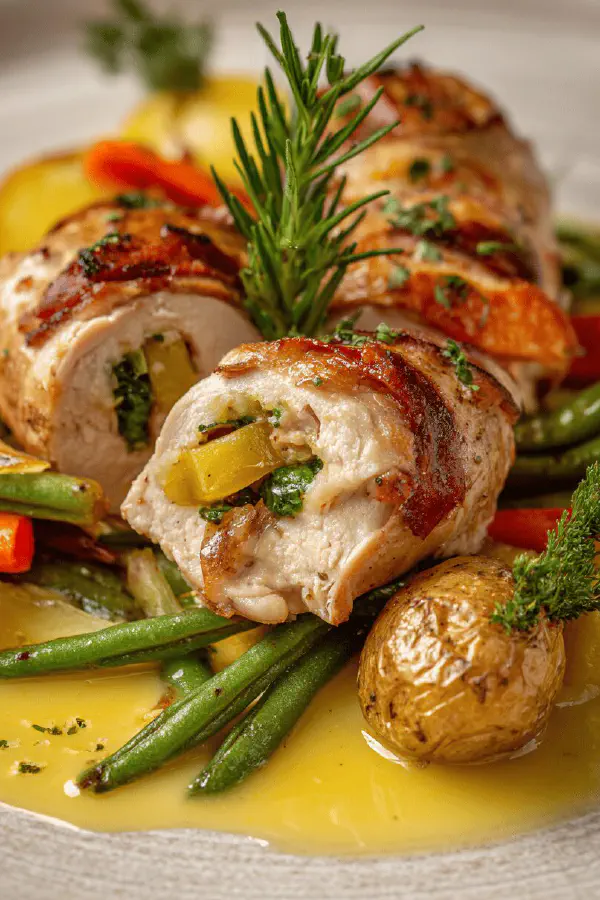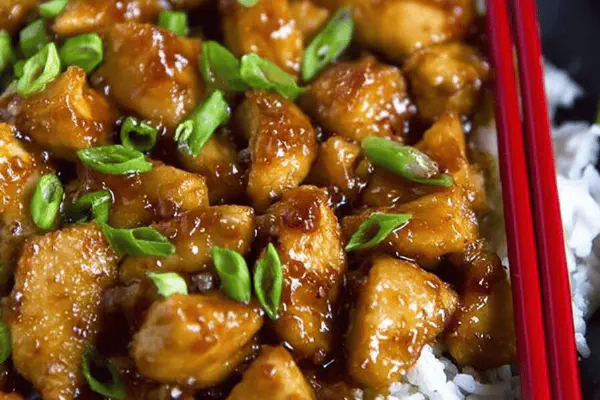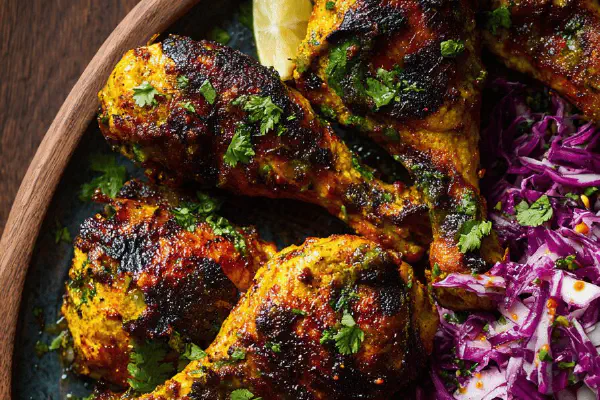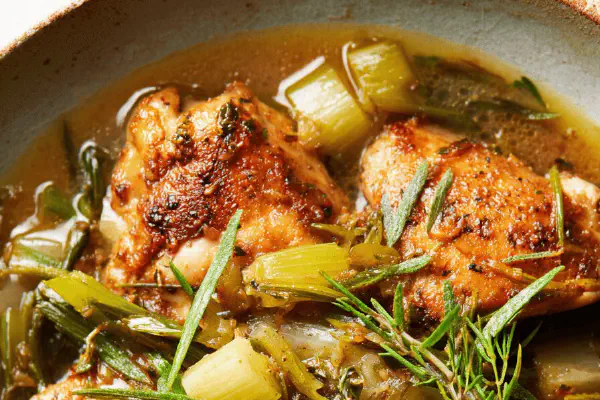Featured Recipe
Chicken Roulades Autumn Veg

By Kate
"
Chicken breasts butterflied and stuffed with autumn root vegetables; wrapped tight and pan-seared. Vegetables like golden fingerling potatoes, parsnip, haricots verts, carrots, and leek julienne cooked al dente then reheated. Sauce built from shallots deglazed with cider vinegar and white wine, finished with cold butter emulsification. Balanced textures, punchy acidity, and rich buttery notes in every bite. No gluten, nuts, eggs, lactose. Nothing fancy, just disciplined layering of flavors, classic French technique with a seasonal twist. Efficient multi-tasking keeps timing in check. Work ahead on veggies, watch for visual cues to avoid overcooking or dry chicken. Smart ingredient swaps for those fresh problems in every kitchen.
"
Prep:
45 min
Cook:
38 min
Total:
Serves:
4 servings
French
autumn
chicken
vegetables
gluten-free
Introduction
Pounding chicken breeds tenderness and even cooking. A simple vegetable medley prepared individually guards texture and flavor purity—no mashed veggies losing their identity. Autumn vegetables give earthy sweetness, balanced by acid punch from cider vinegar sauce. Classic French pan sauce technique with cold butter emulsification keeps rich mouthfeel without heaviness. A small finesse in rolling makes slicing prettier and keeps filling tucked, no leaking disaster. High heat sears exterior, locking juices inside. Resting after cooking is key; impatience breeds dry meat. Precise steps that pay off with biggest flavor bang for your effort. Ingredients swap here and there keeps it fresh, in tune with seasonal availability or allergies. Practical kitchen efficiency meets culinary discipline. Manual sensory cues trump timers every time, develop intuition—colour, texture, aroma are your guides. No clutter, just smart method. Every step earned.
Ingredients
About the ingredients
Potatoes selected for waxiness hold form better than floury types—no mush on the plate keeps contrast alive against tender chicken. Parsnips add natural sweetness, but kohlrabi cuts a fresher, slightly peppery option if you want brightness. Haricots verts blanched crisply provide snap; overcooking dulls color and texture. Carrots and leek julienne balance subtly. Butter is a classic agent for richness—if dairy is an issue, ghee or plant-based butter substitutes work but emulsification changes; add gently to avoid breaking sauce. Olive oil at cooking start contributes fruitiness but maintain moderate heat to prevent burning. Shallots bring sweetness and aroma to the sauce base, prefer fresh and finely diced for even cooking. The vinegar-wine combo cuts through the fat with acidity, essential for balance; alcohol evaporates, leaving flavor punch. Salt and pepper adjustments rely on tasting; flavors concentrate as liquids reduce.
Method
Technique Tips
Separate blanching corrects each vegetable’s timing—avoid one-pot mush and loss of texture. Cold water shock terminates cooking immediately; hot veggies continue cooking residual heat, ruining al dente feel. Pounding chicken between plastic wrap achieves uniform thickness and keeps work surface manageable—not tearing poultry is a skill. Spreading filling thinly avoids cumbersome rolling and uneven cooking. Pan searing over medium heat ensures Maillard reaction without burning. Visual cues: looking for golden crust, not charred black. Resting under foil traps warmth and lets juices redistribute—skip this step and dry meat follows. Deglazing hot pan captures fond, unlocking deep flavor compounds. Reduction concentrates acids and sugars; watch for sirupy texture—too little and sauce tastes sharp, too much and bitterness creeps. Cold butter added off-heat creates glossy, stable emulsion—slowly whisking incorporates air and fat evenly; rushing breaks sauce into oily puddle. Season in layers—tasting all along prevents surprise saltiness. Warmed vegetables help final presentation temperature match. Toothpicks removed just before plating keeps presentation clean and cutting easier. Diagonal slicing increases surface area, showing inner layers attractively. Pre-preparation tips: julienning vegetables ahead saves frantic chopping, storing them dry keeps from wilting. Practical swaps and troubleshooting embrace real kitchens’ irregularities. Sensory-driven process guides cook more than clock anyone.
Chef's Notes
- 💡 Watch for snap; beans should bite back, carrots sweet but firm. Prep each vegetable solo for best texture. Timing key.
- 💡 Cold shock those veggies after blanching. Stops cooking, locks color. No mush allowed, retain vibrant appeal, flavor focus.
- 💡 Roll chicken tightly. No gaps, no leaks. Use toothpicks if struggling. Good technique keeps filling intact, even slices after.
- 💡 Pan over medium heat—avoid high temps. Searing too fast leads to dry insides, tough outsides. Wait for that nutty aroma.
- 💡 Butter sauce should shine, not separate. Cold cubes whisked off heat maintain emulsion. If it breaks, splash cold water slowly.
Kitchen Wisdom
How do I keep chicken from drying out?
Pound uniformly. Watch pan heat carefully. Rest before slicing; let juices settle.
What if my sauce separates?
Whisk in cold water for quick fix. Avoid high heat. Slowly adding back butter right after heat helps.
Best way to store leftovers?
Wrap tightly, keep cold. Reheat carefully; avoid overcooking. Moisture retention is essential.
Can I substitute ingredients?
Yes, kohlrabi works well instead of parsnip for crunch. Ghee instead of butter for dairy-free. Adjust timing accordingly.



